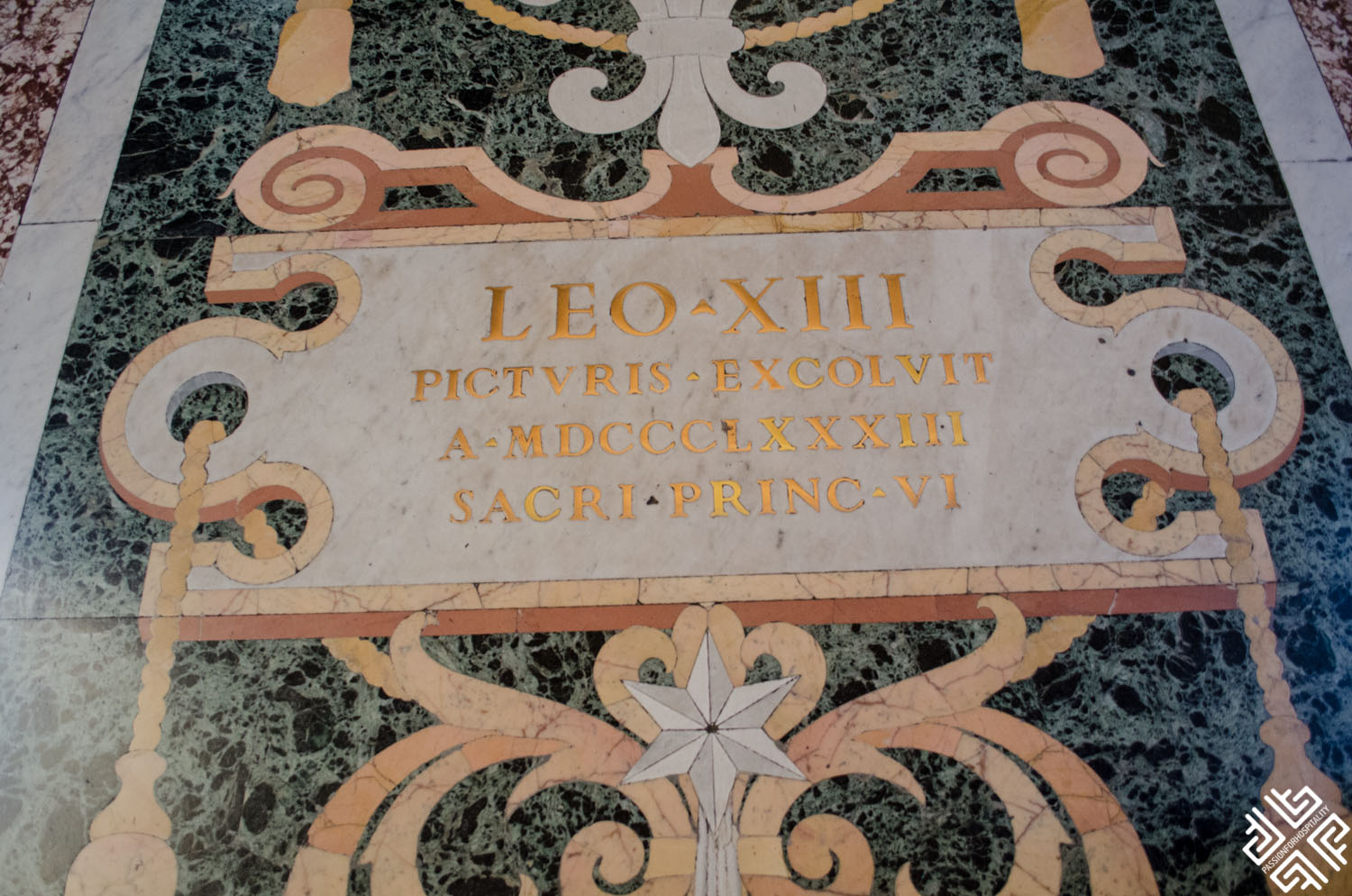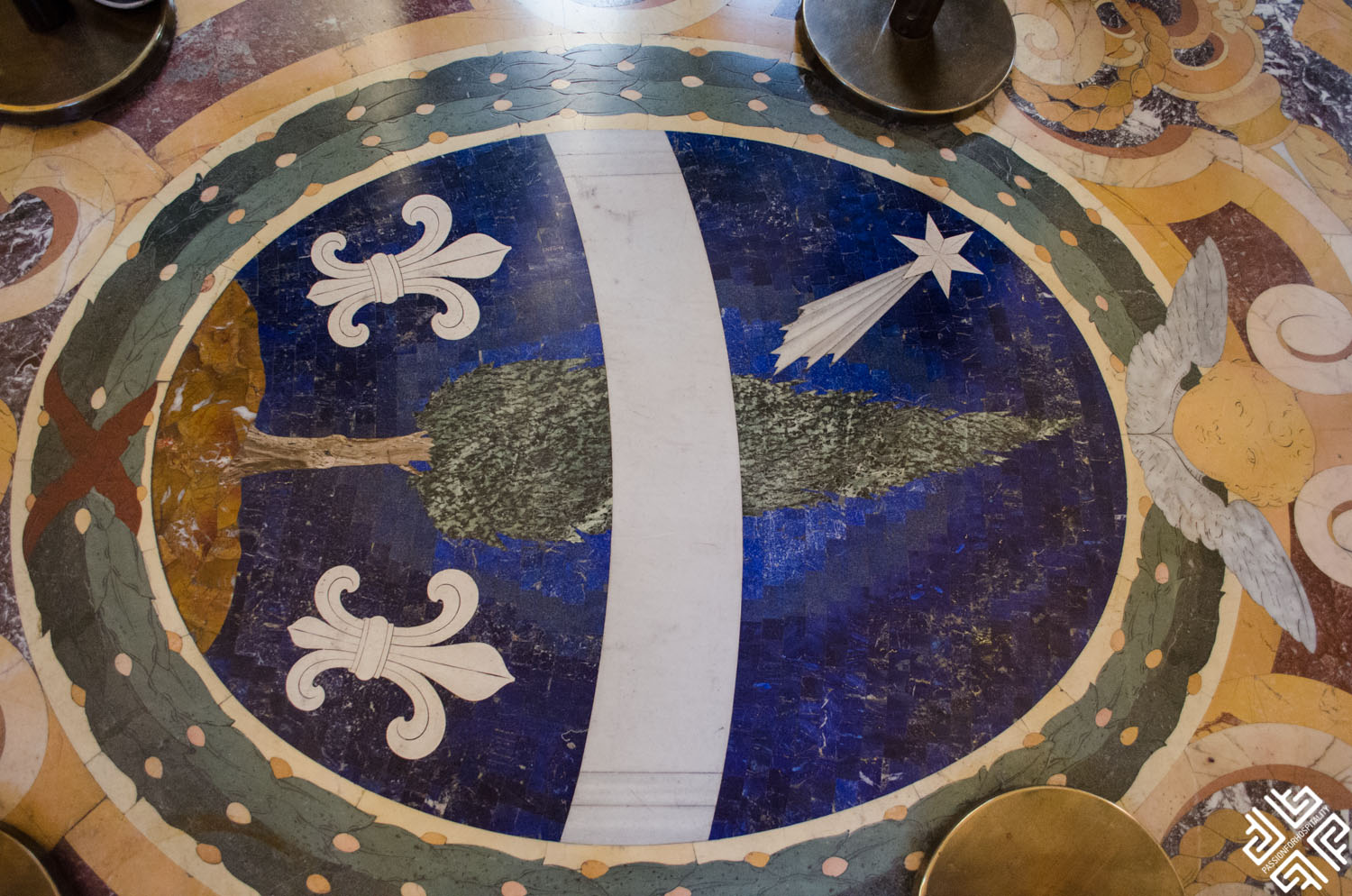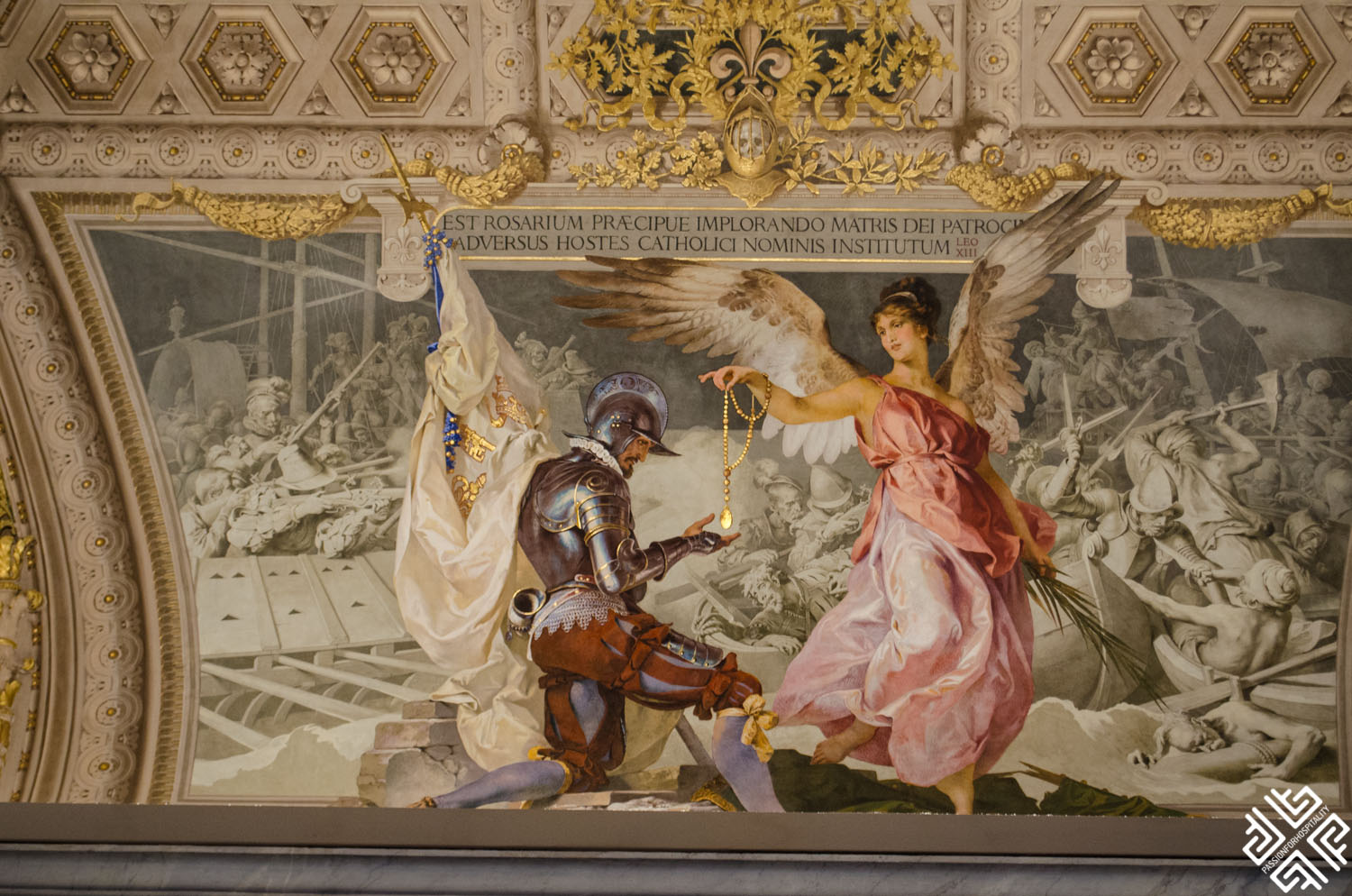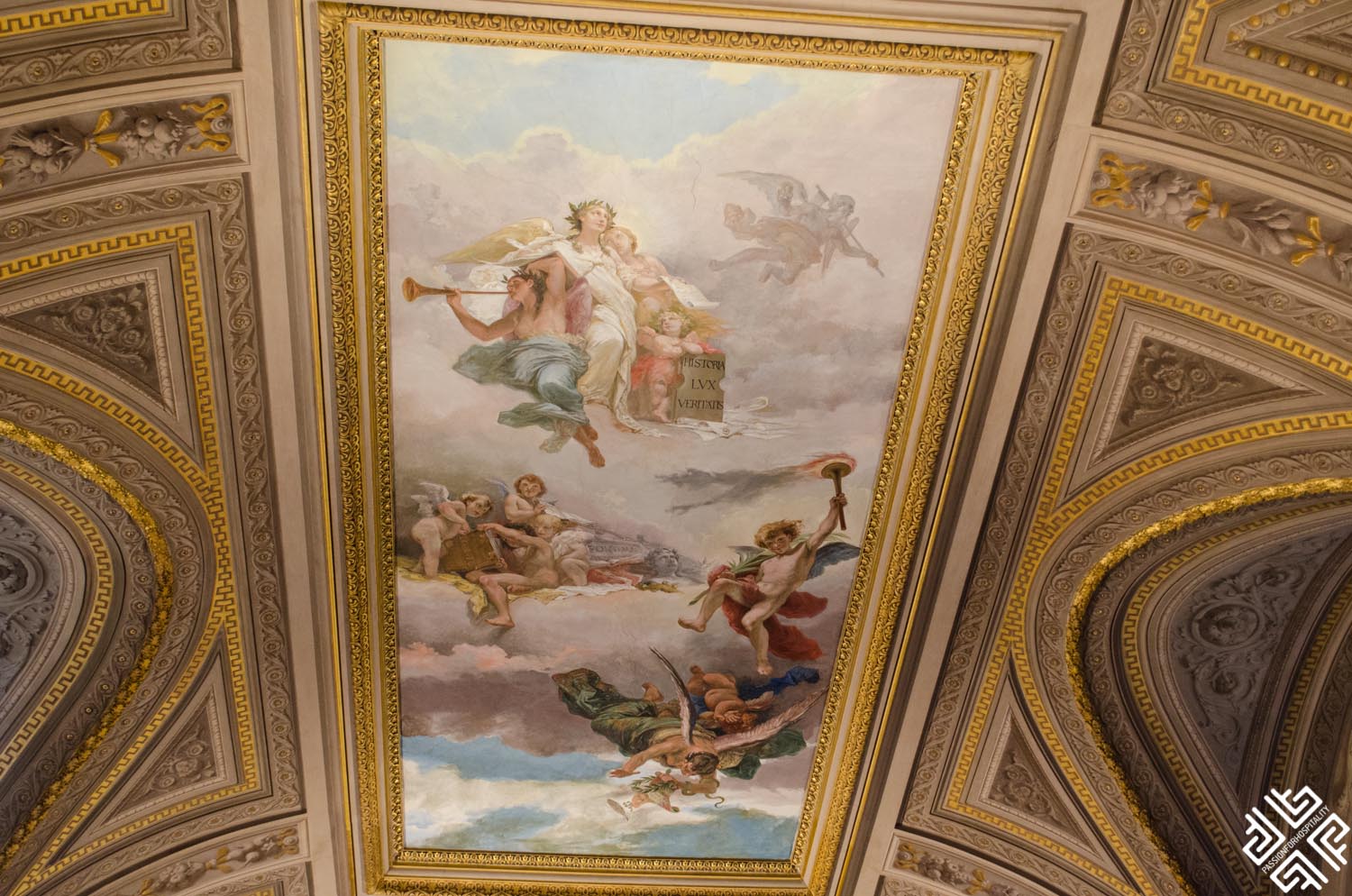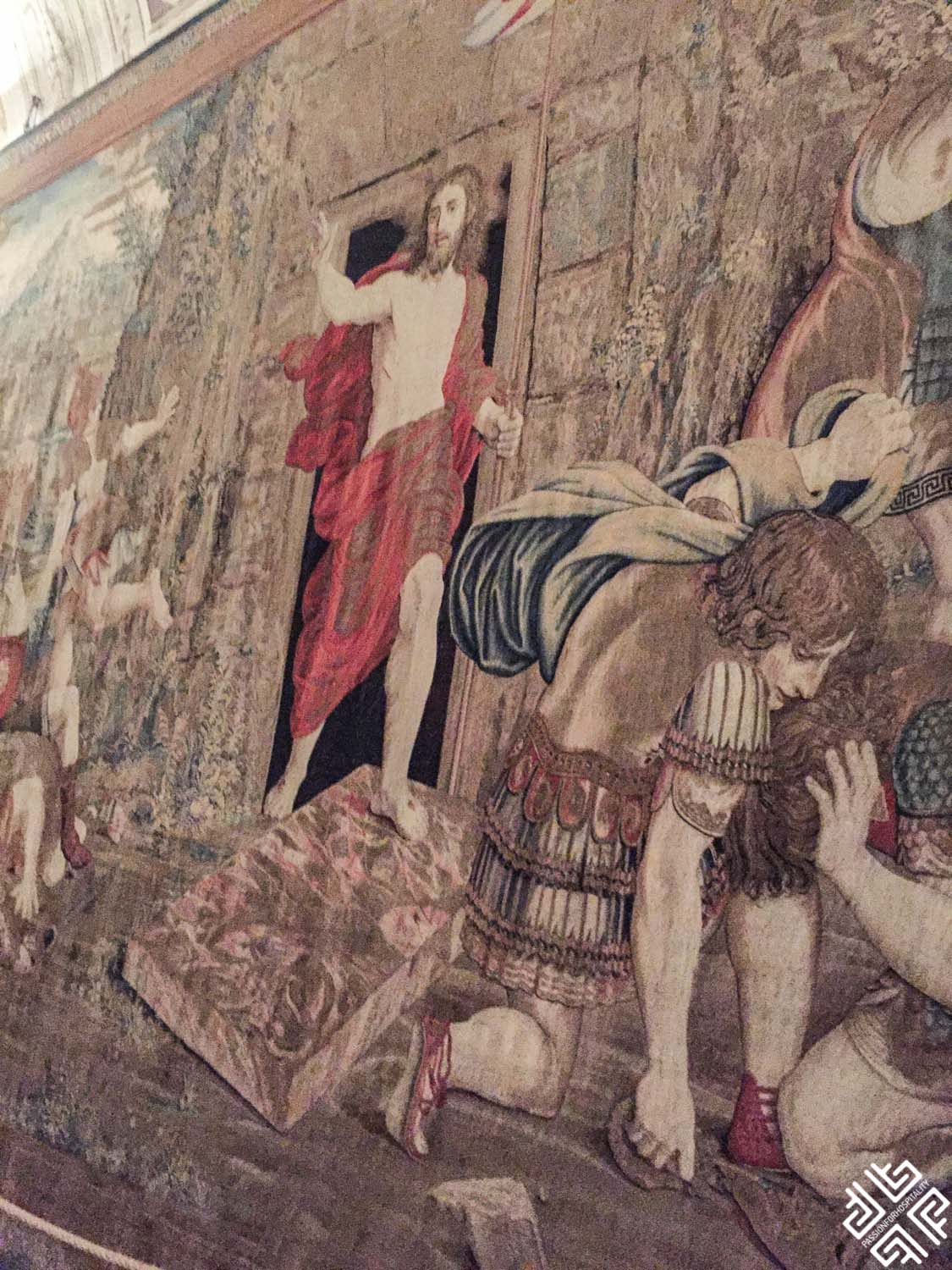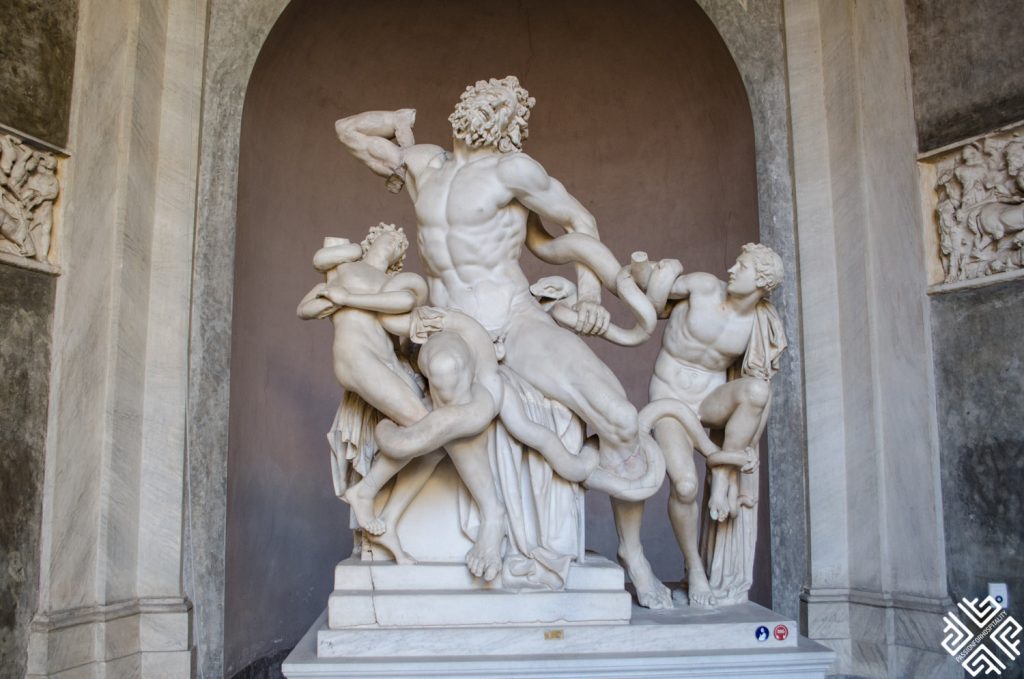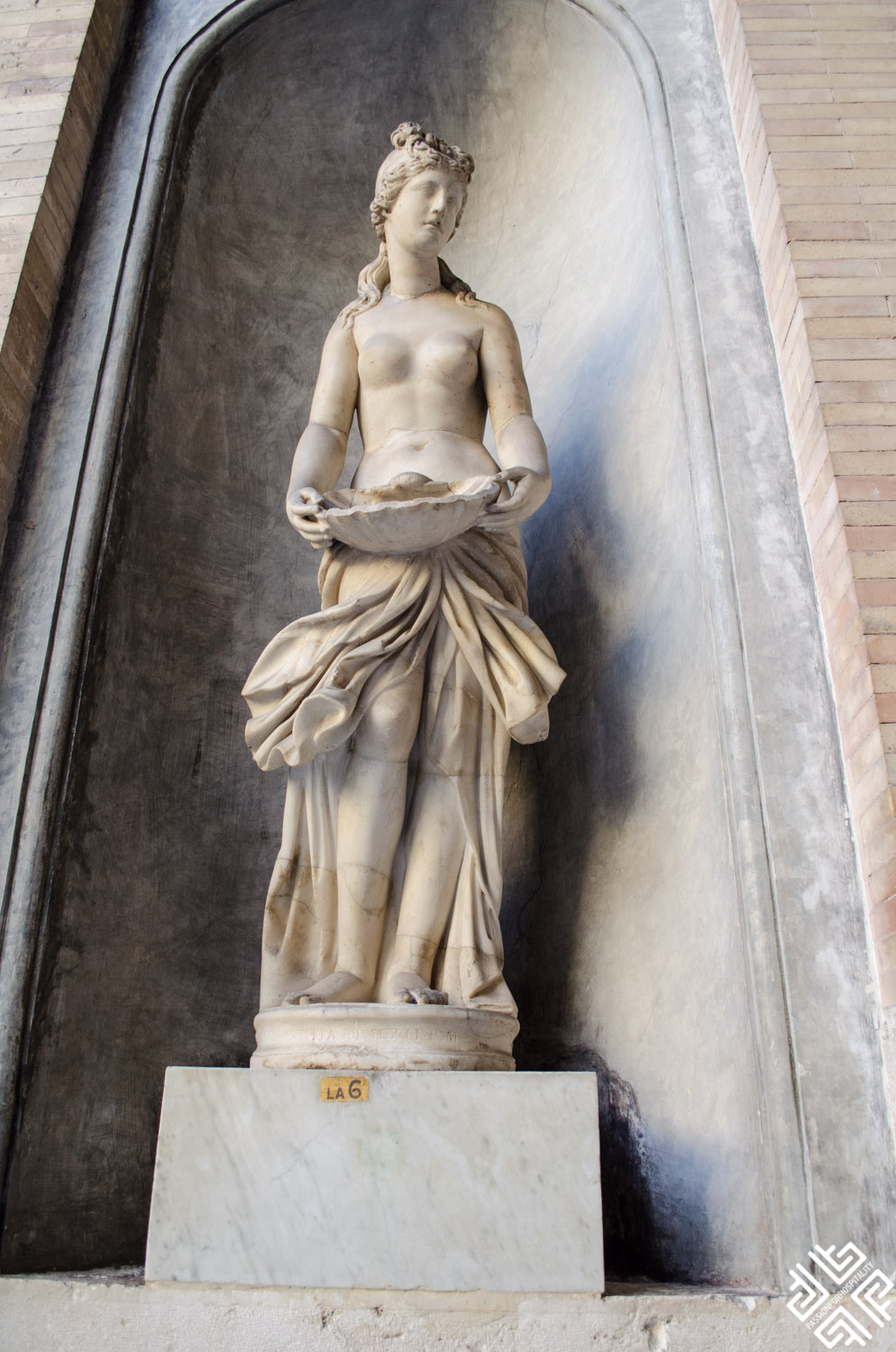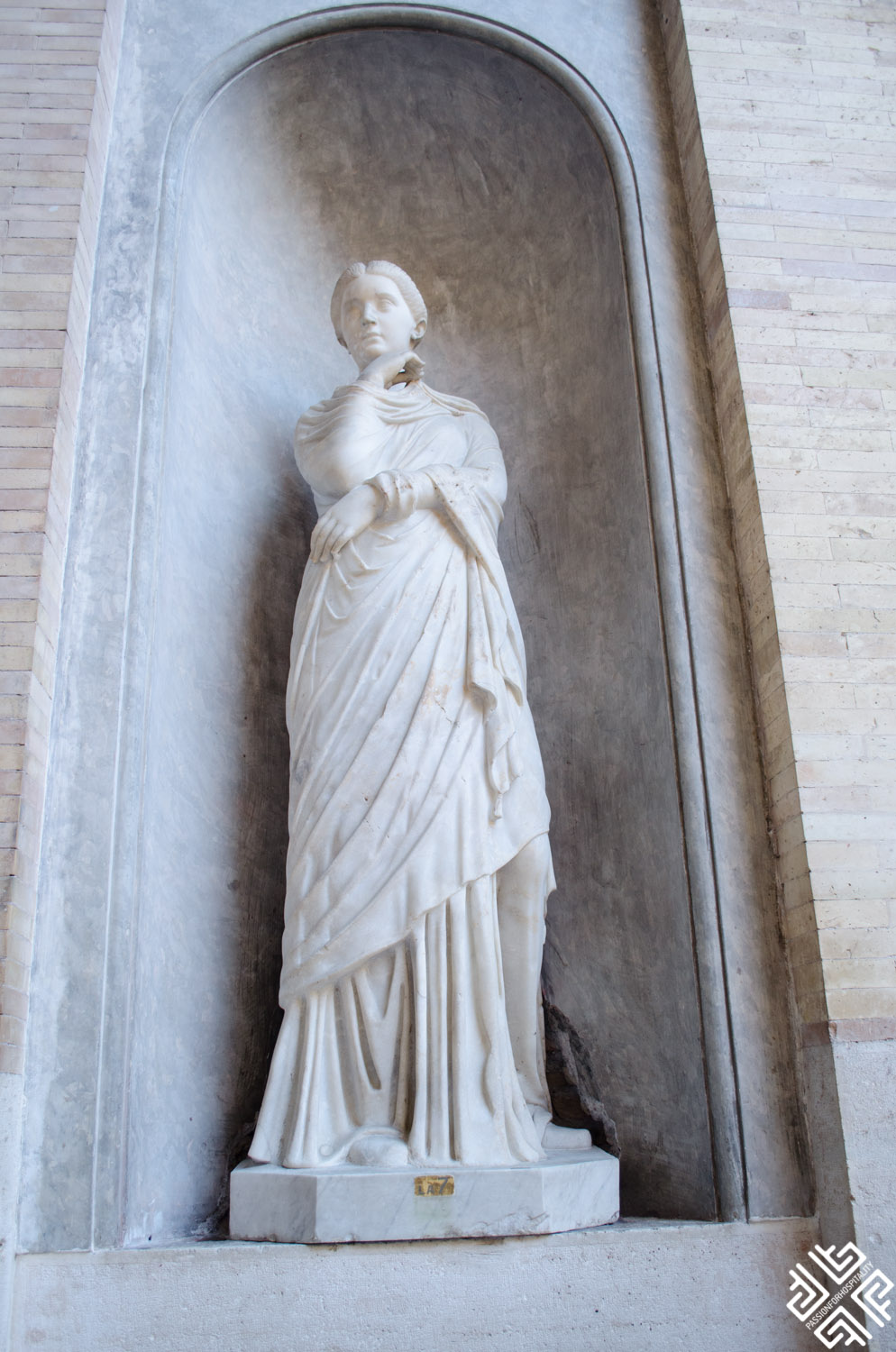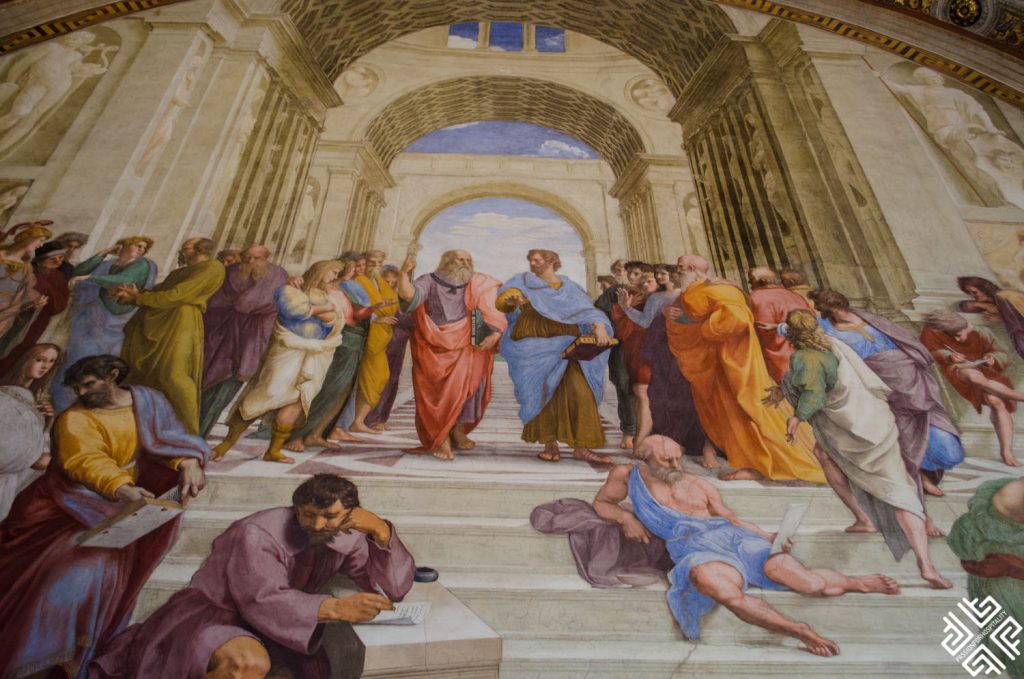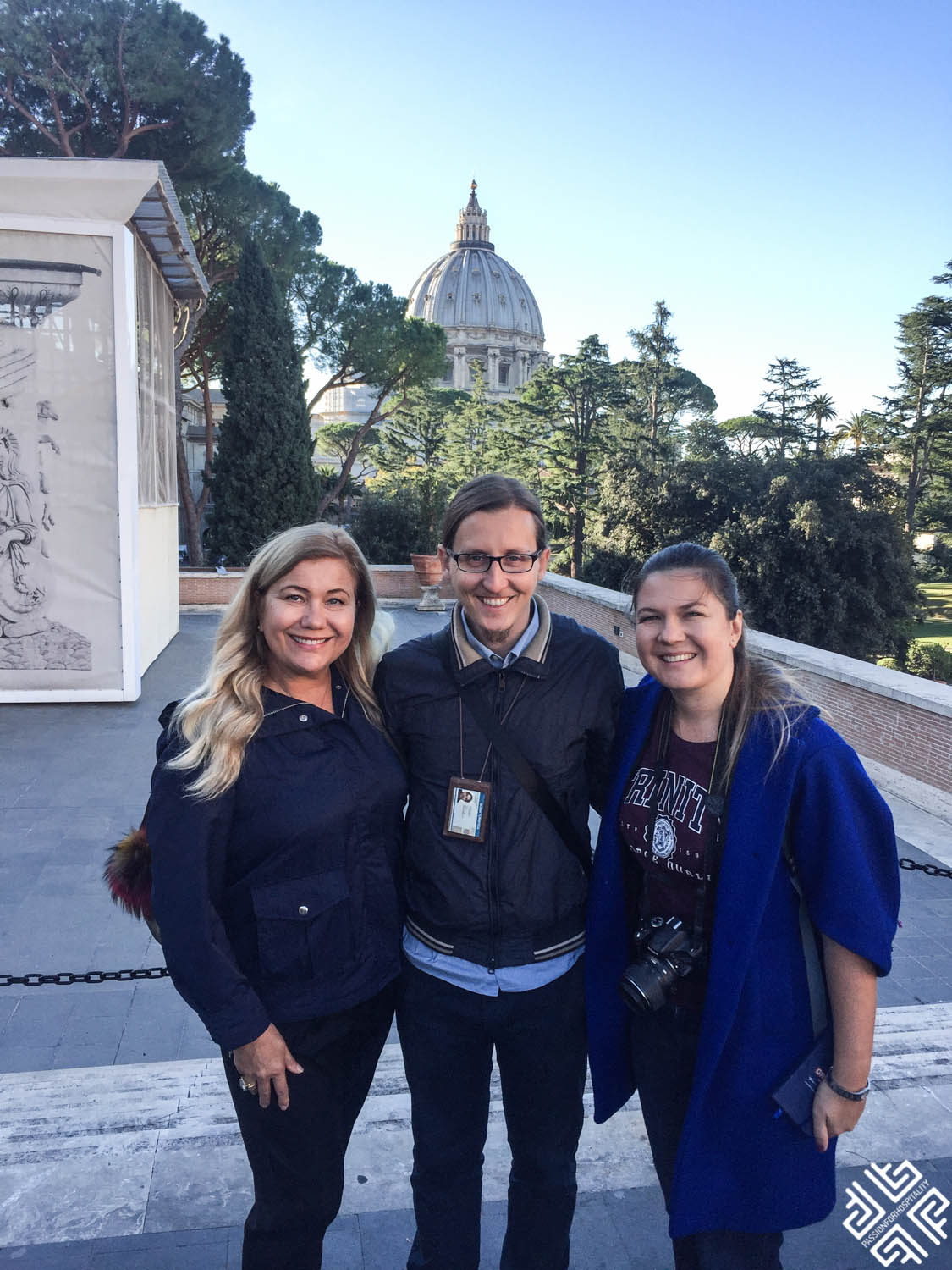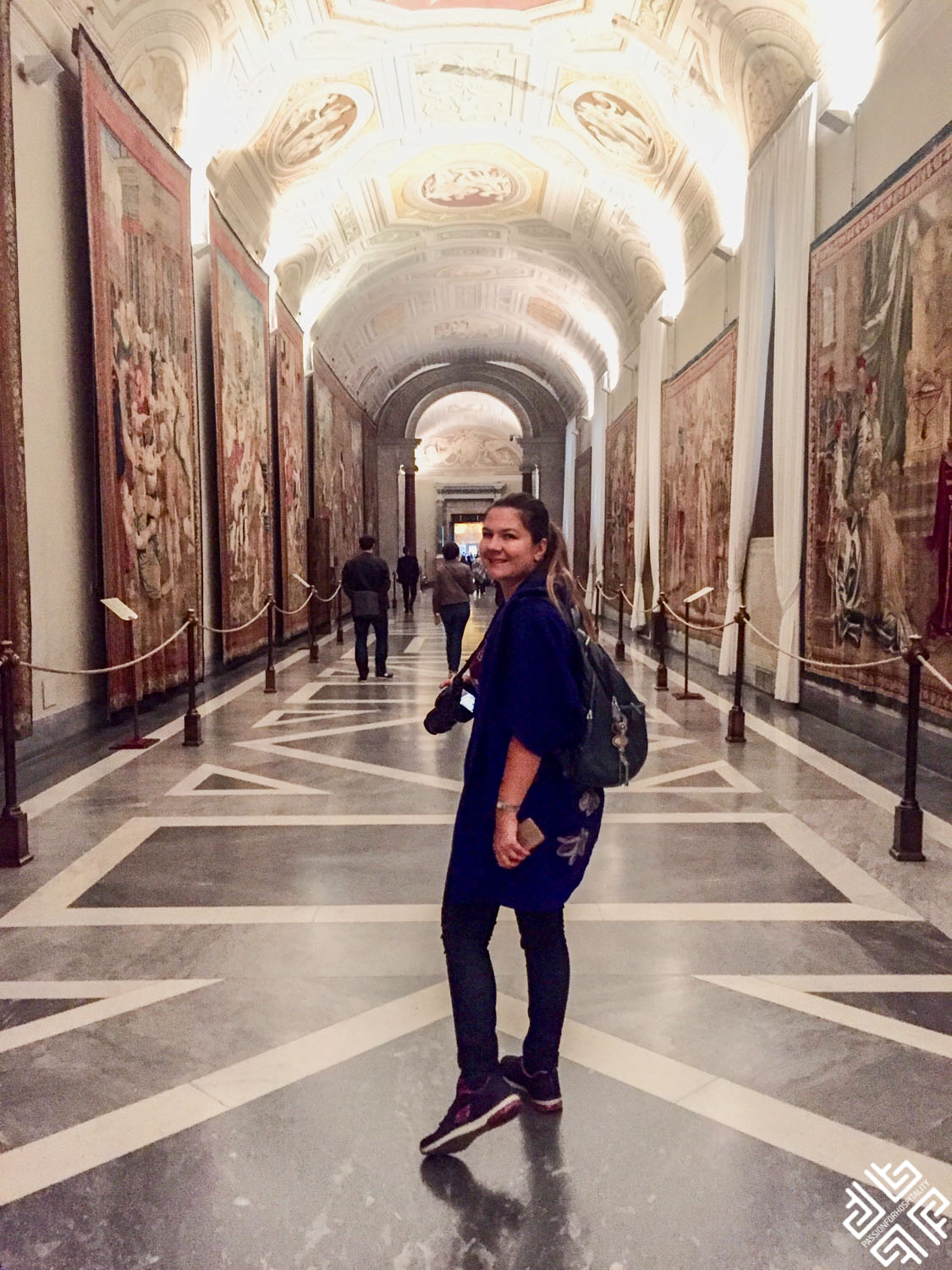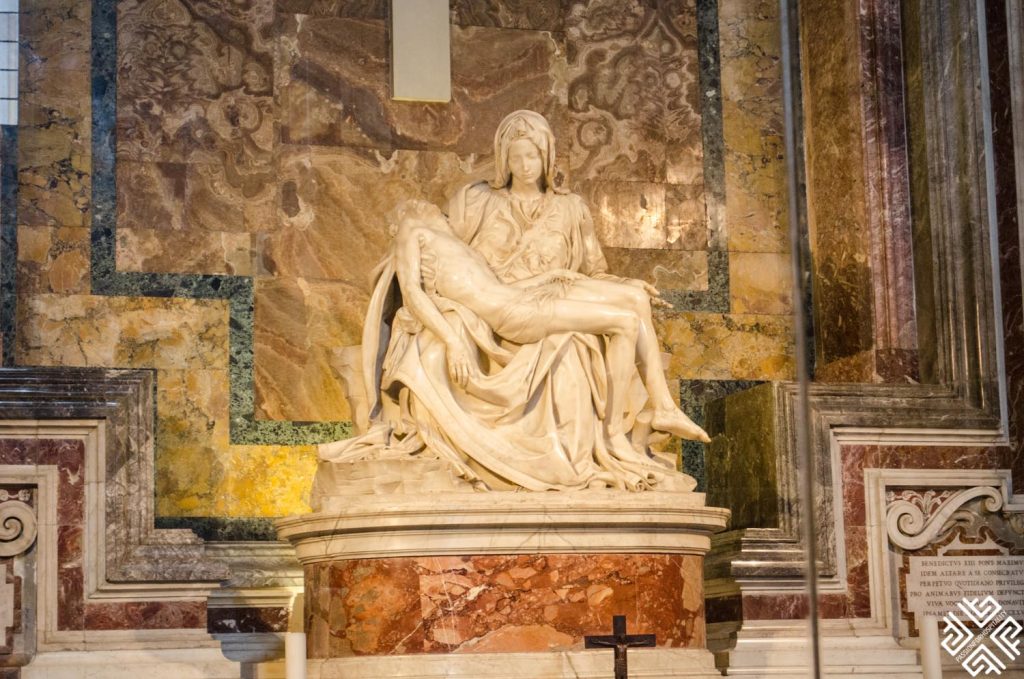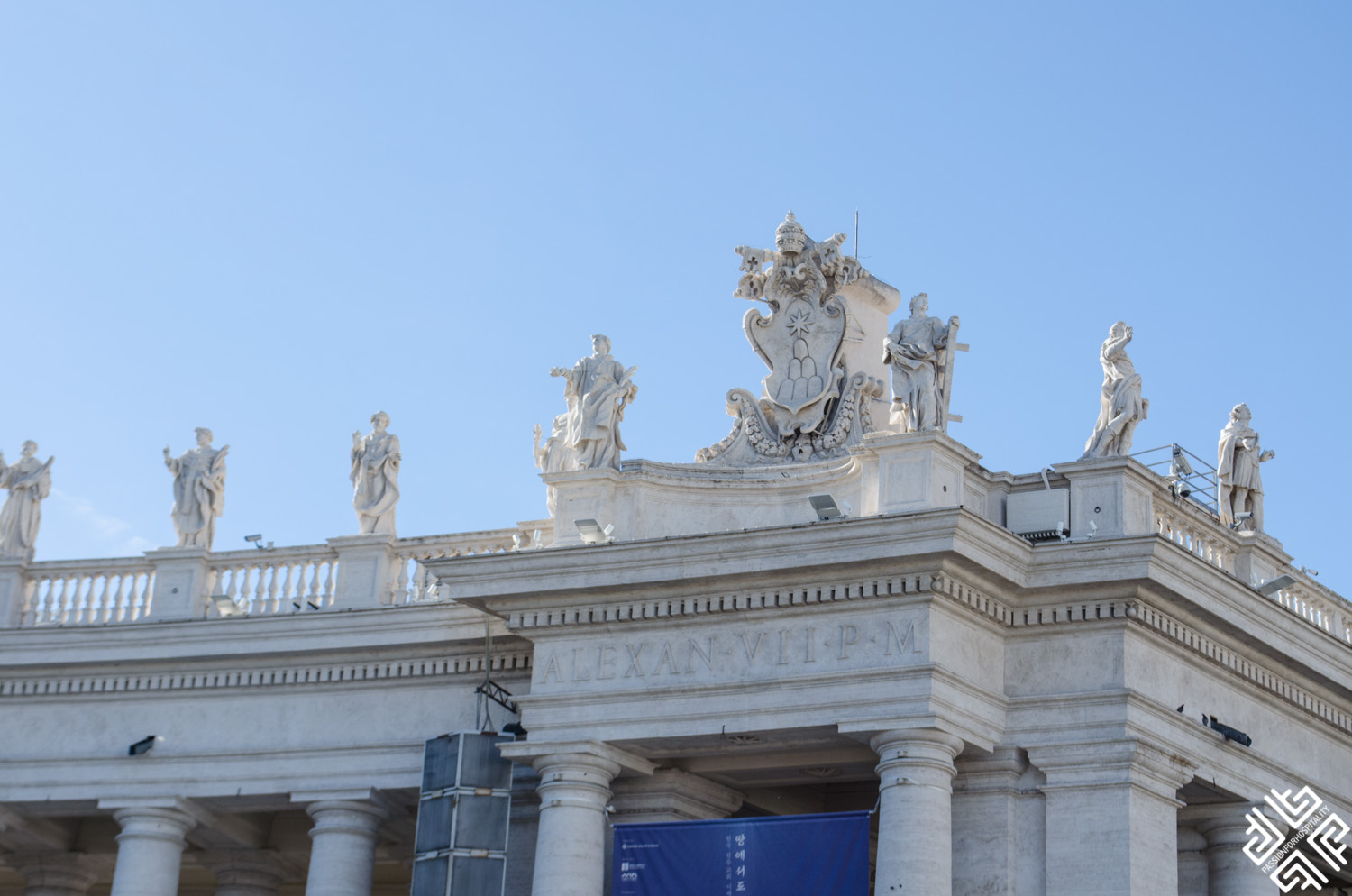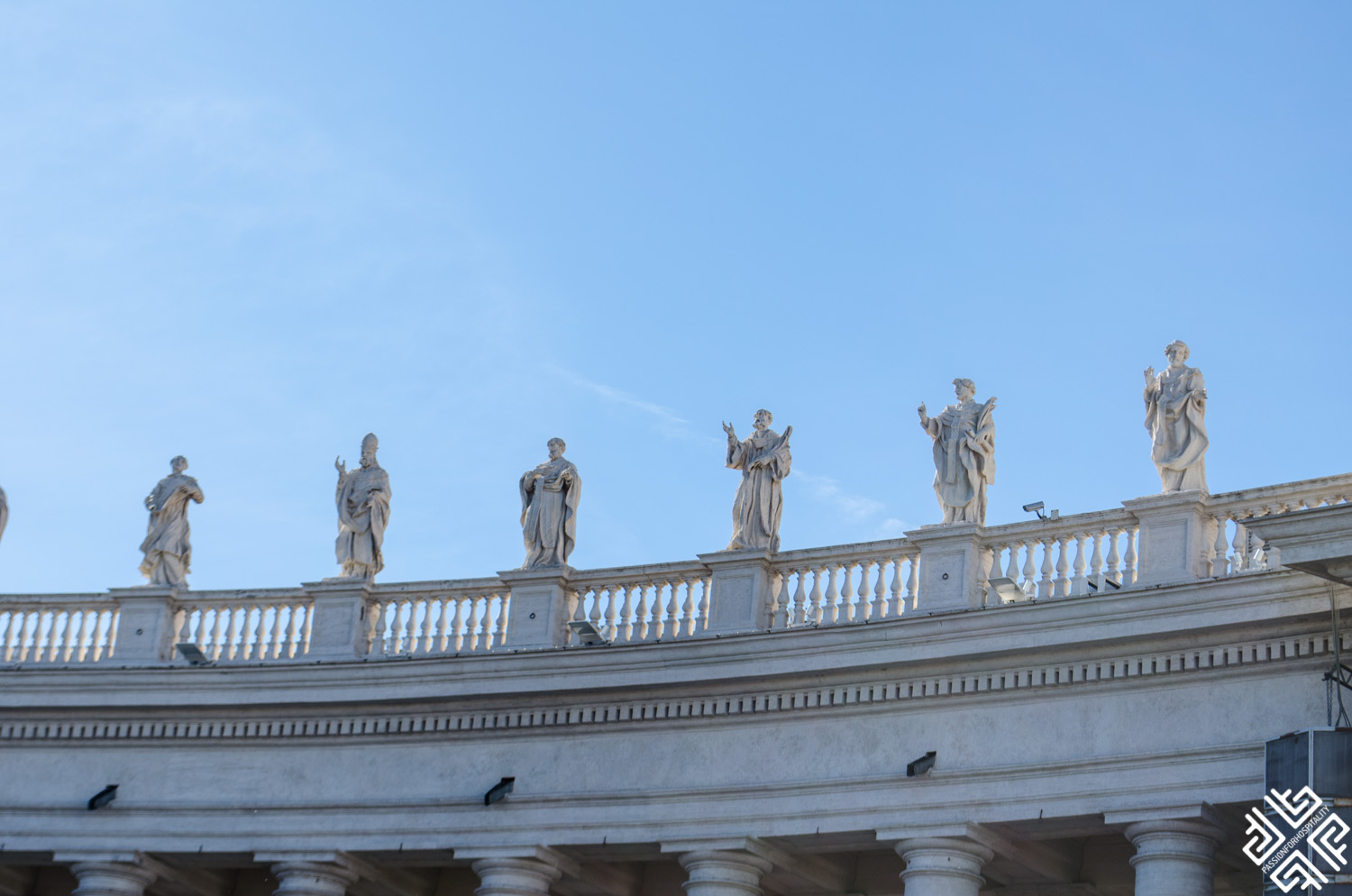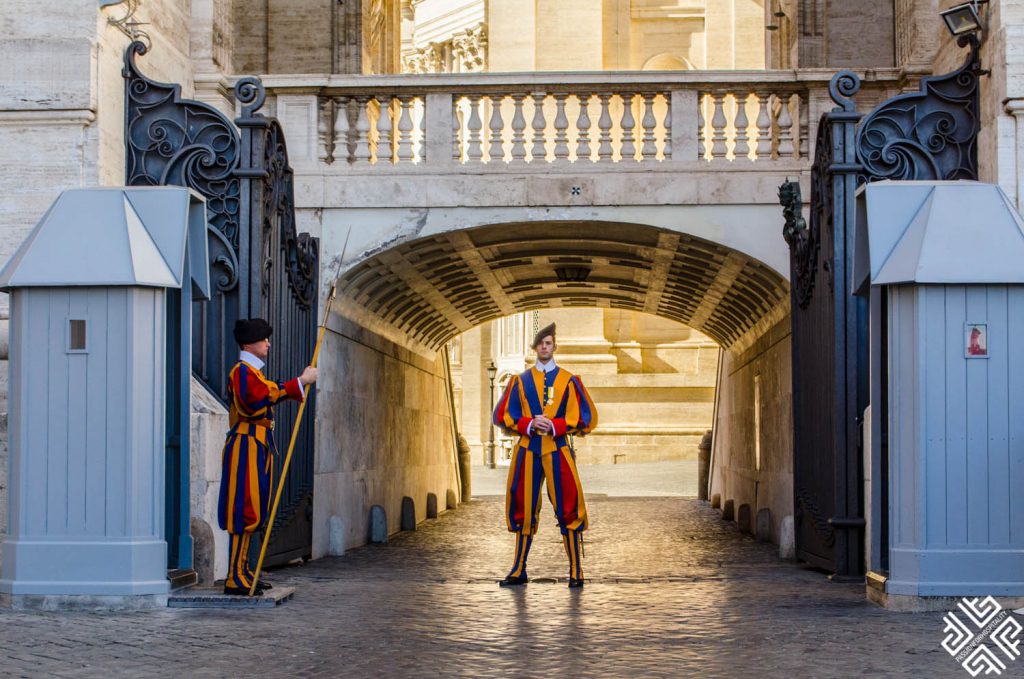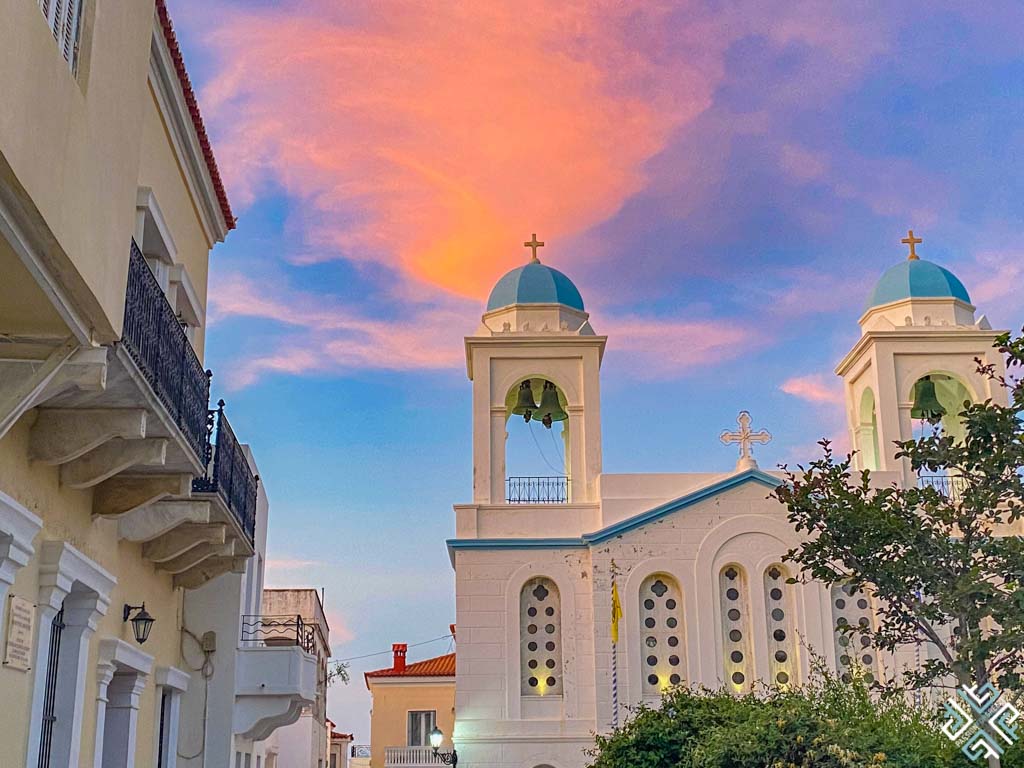The Vatican City, Rome’s most important landmark has served as an inspiration in books and numerous Hollywood films, it is here that the world’s greatest Renaissance artists like Leonardo da Vinci, Raphael, and Michelangelo created their most renowned masterpieces — no wonder it serves an idealized status. To witness Michelangelo’s most treasured creation — the Sistine Chapel we embarked on an early morning journey, the Vatican Small Group Tour.

Early Morning Vatican Small Group Tour with LivItaly Tours
My first time visiting the Vatican City was in 2000 and the only faint memory that I recall was a dark and poorly lit St. Peter’s Basilica, this has all changed as it is now beautifully illuminated — as it deserves to be. Anyone coming to Rome will want to experience the Vatican but the chances of missing this opportunity are also high as it gets extremely busy and if you don’t plan and purchase in advance you can spend hours in a queue and sent back where you came from (if you see the queues for yourselves you will believe that this is a fact and not a myth).
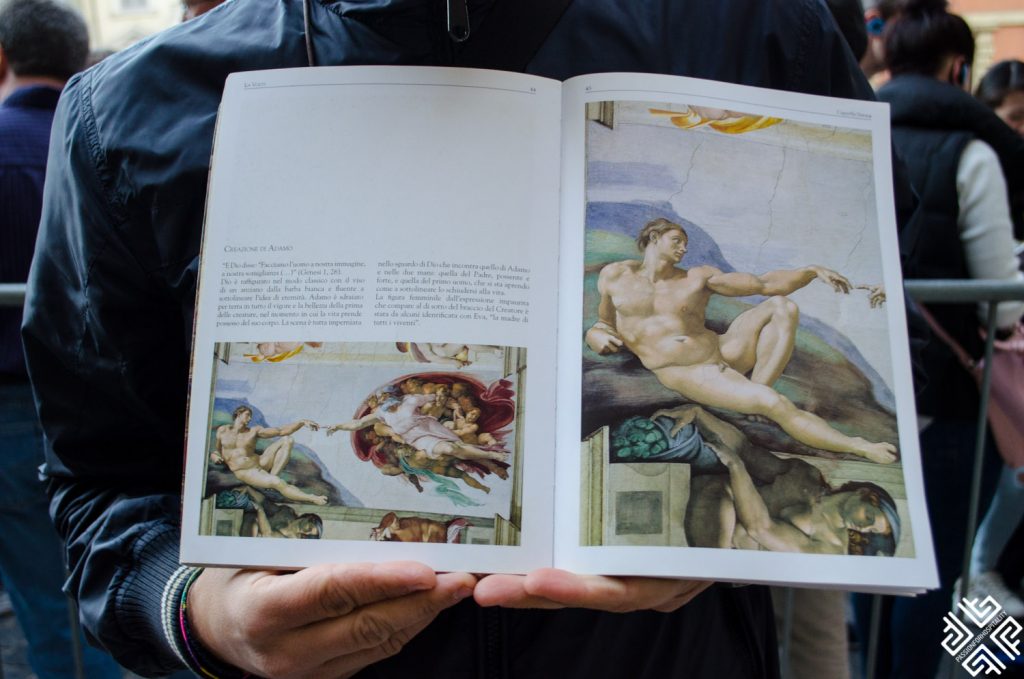
Our meeting point was at 07:15am across at the Vatican Cafe. At the first light of dawn we made our way to the entrance of the Vatican Museum. Our fantastic guide Davide explained some details about Michelangelo and how he created this remarkable masterpiece before we went in and followed the path towards the hidden gem — the Sistine Chapel.
Some facts about the Sistine Chapel:
- The chapel was commissioned and named after Pope Sixtus IV which in Italian is Sisto. Long before Michelangelo was commissioned to complete the famous frescoes, Sisto had instructed Botticelli one of the first Renaissance painters to complete the frescoes outlining the story of Moses on one side, and the story of Christ on the other side.
- The pope who commissioned Michelangelo was Julius II, the nephew of Pope Sixtus IV. Michelangelo did not want to accept this project as he was a sculptor, not a painter thus he left Rome and went to Florence. Pope Julius II sent his Swiss guards after him, to bring Michelangelo back to Rome.
- Michelangelo finally accepted the commission in 1508 which took four years of hard work to complete. In 1512 the awe-spiring ceiling was complete.
- In 1536 Paul III had approved the project of the Last Judgement which Michelangelo painted over the altar between 1536-1541. In total Michelangelo spent 8 years to complete the Sistine Chapel.
- Michelangelo was an architect, sculptor and painter.
Before Michelangelo, God was represented with eyes and a triangle of Trinity — however in his frescoes at the Sistine Chapel, Christ took on a human form. Observing the paintings you will notice the Roman/Greek art which Davide explained to us as we walked through the Museum and its courtyards. Michelangelo also changed the style of painting of Adam and Eve, where he presented the serpent as a woman’s head rather than a male figure.
The myth of Michelangelo painting lying down on his back is in fact not true, instead he used a platform which extended over the half of the area. The ceiling is divided into nine panels and in the centre you will find the stories from the Book of Genesis from the Creation up until the story of Noah on which you will not see any animals painted. The feeling of being inside the Sistine Chapel is indescribable, something you must witness for yourselves and for this reason photos are not allowed — I do hope that you will get to experience this in real life and if you end up in Rome make sure to book a Vatican Small Group Tour, it really makes a difference.
Gallery of the Candelabra
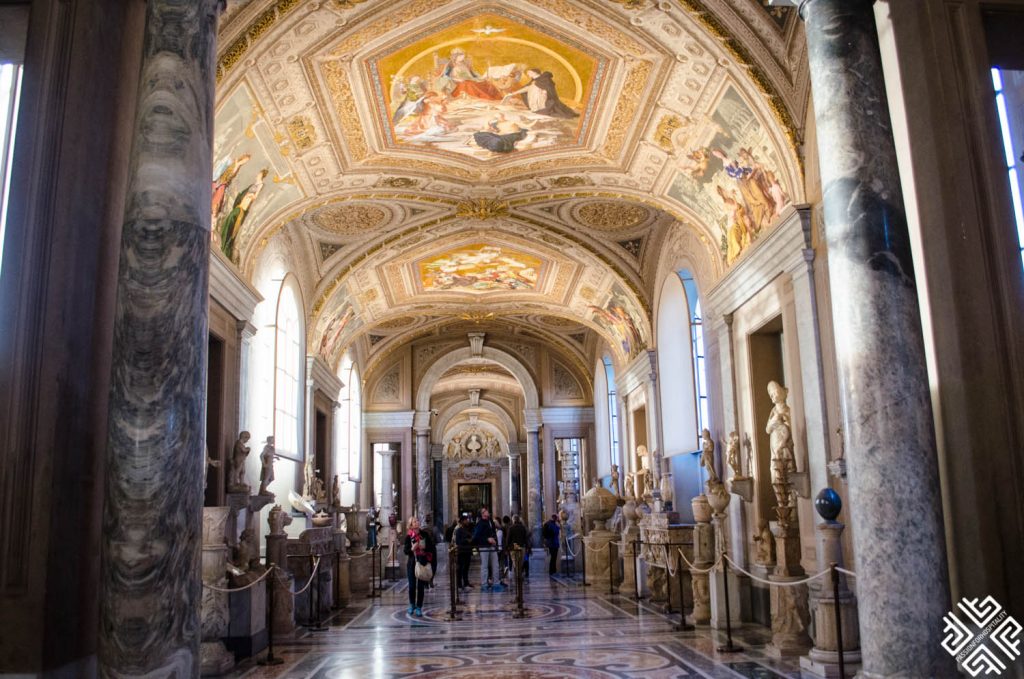
A long hallway, originally an open air loggia built in 1761, is divided in six rooms separated by arches which are supported by imposing marble columns.
The gallery houses works by Ludovico Seitz and Domenico Torti. The colourful ceiling portrays the humanistic element of Renaissance art.
Gallery of Tapestries
The gallery is decorated with Flemish tapestries completed by a renowned weaver Pieter van Aelst.
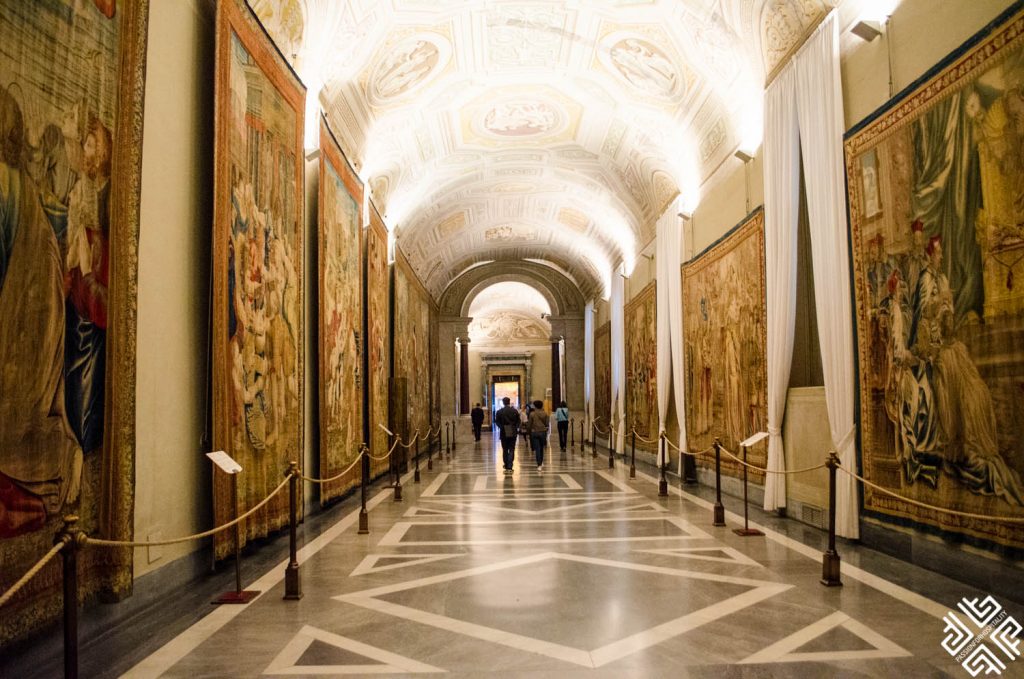
One of the impressive works you will find here is a tapestry of Jesus Christ and like the Mona Lisa at the Louvre he will follow you with his eyes and you can see the movement of the pedestal that he stands on move as you pass by.
Gallery of Maps
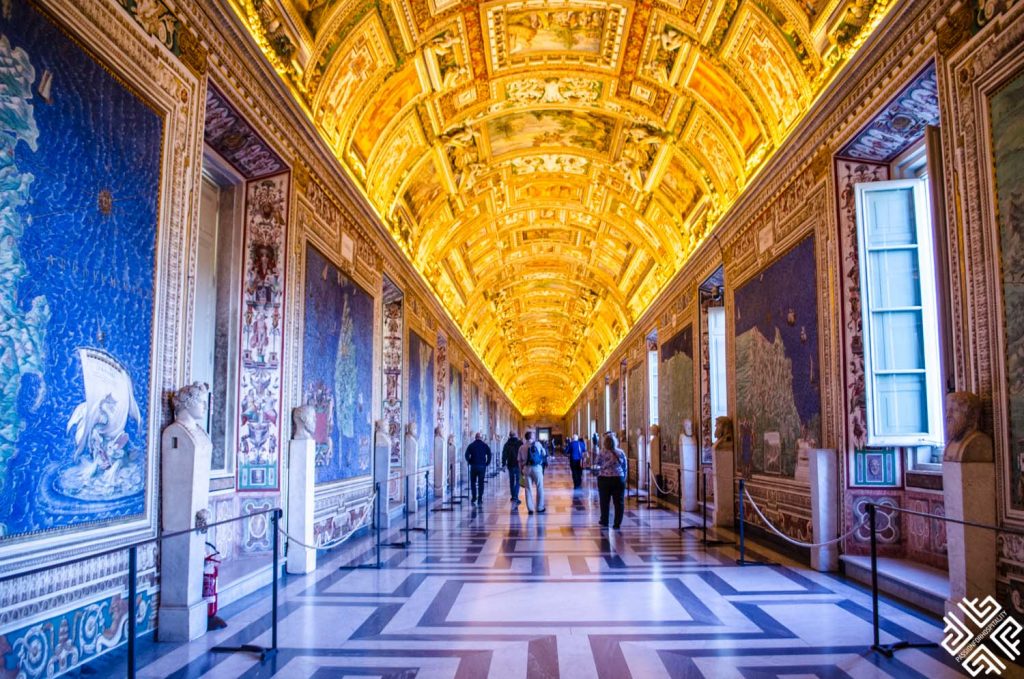
One of the most impressive and bright rooms at the Vatican Museum is the Gallery of Maps. Forty maps decorate the walls of this impressive room representing the Italian regions and papal properties at the time of Pope Gregory XIII (1572-1585).
The project was commissioned to the famous geographer of the time, Ignazio Dant, and were completed between 1580-1585.
Pinecone Courtyard
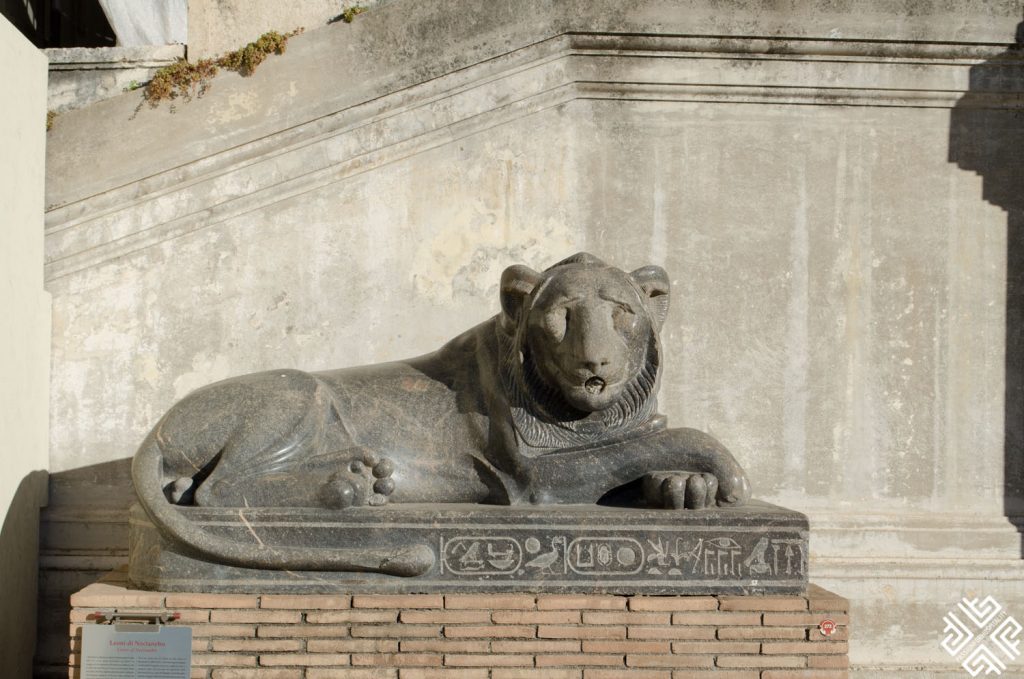
This courtyard was named after an imposing bronze pinecone which is almost 4 metres high. Two bronze peacocks copies from 2nd century A.D. are facing the pinecone from both sides. The originals can be found in the Braccio Nuovo Museum.
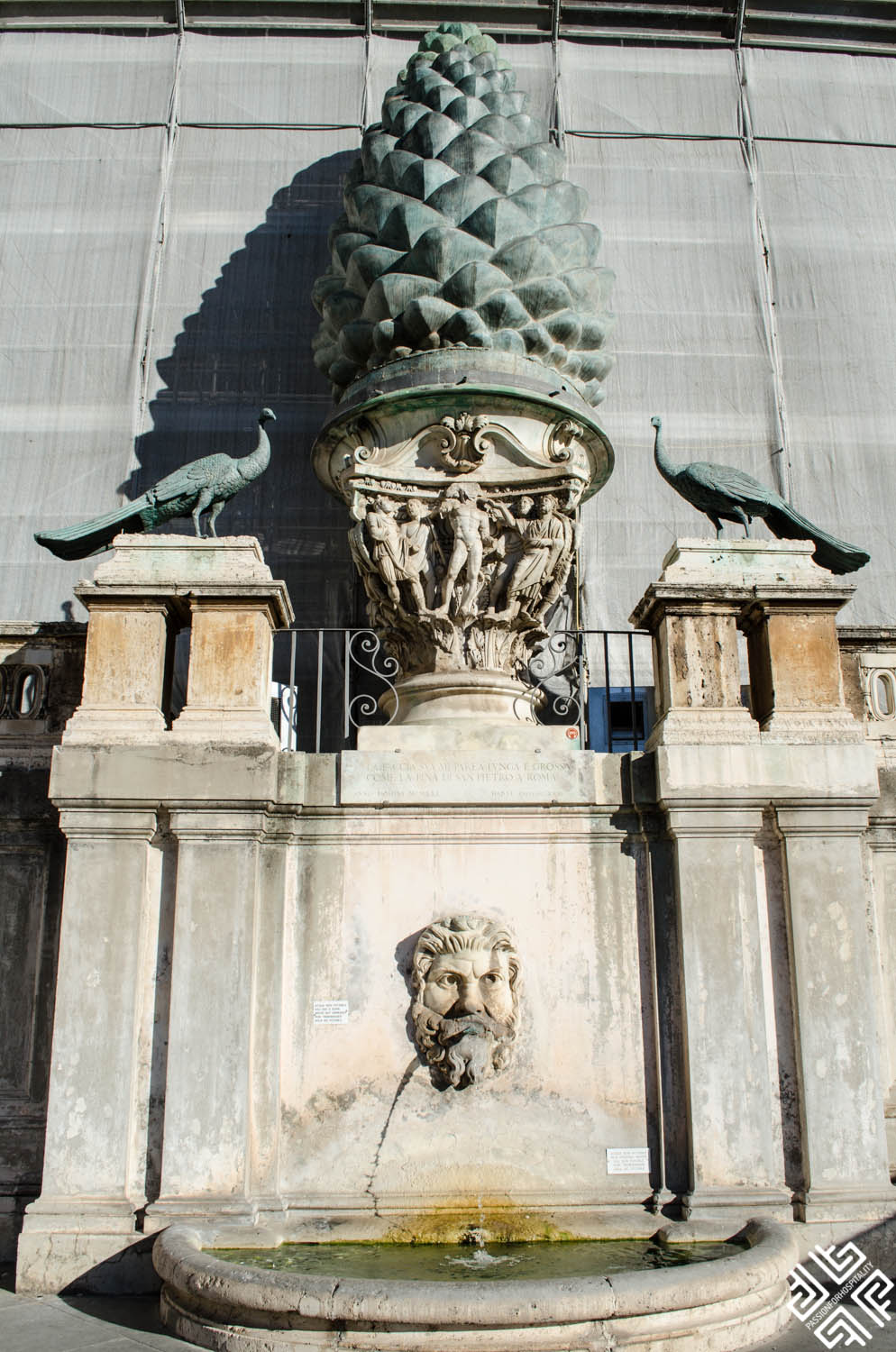
In the middle of the courtyard stands a bronze Sphere known as the Sfera con Sfera made by the famous Italian sculptor Arnaldo Pomodoro. Series of bronze statues can be found around the world, there is one at the Trinity College in Dublin.
On one of the corners of the square you will also find a plaque that mentions the name of one of the Vatican’s famous guests — Leonardo da Vinci.
Octagonal Courtyard
This glorious courtyard housed the first papal collections of Classical Antiquity and it is here that pope Julius II placed his treasured collections, which were enriched by his successors, pope Clement XIV and Pius VI.

As Davide explained the mesmerising pieces and the impressive characters from Greek mythology inspired the characters in the frescoes which Michelangelo later painted inside the Sistine Chapel. The Apollo Belvedere from the Classical Antiquity took the face of God in his paintings.
The statue of Laocoön and His Sons sculpted expressing such feelings of agony and detail is one of the greatest surviving works of Hellenistic art which was actually appraised by Michelangelo and then Pope Julius II bought it and put it into the Vatican Museums. The perfect musculature detailing the actual body was conveyed into Michelangelo’s masterpiece at the Sistine Chapel.
The Greeks were obsessed with beauty and attention to detail. They would carve the statue from all sides, unlike the Italian sculptures would only focus on the rear side which in turn meant that they could produce sculptures in a shorter period of time.
Belvedere Torso a marble statue of a nude male had greatly inspired the works of Michelangelo and Raphael.
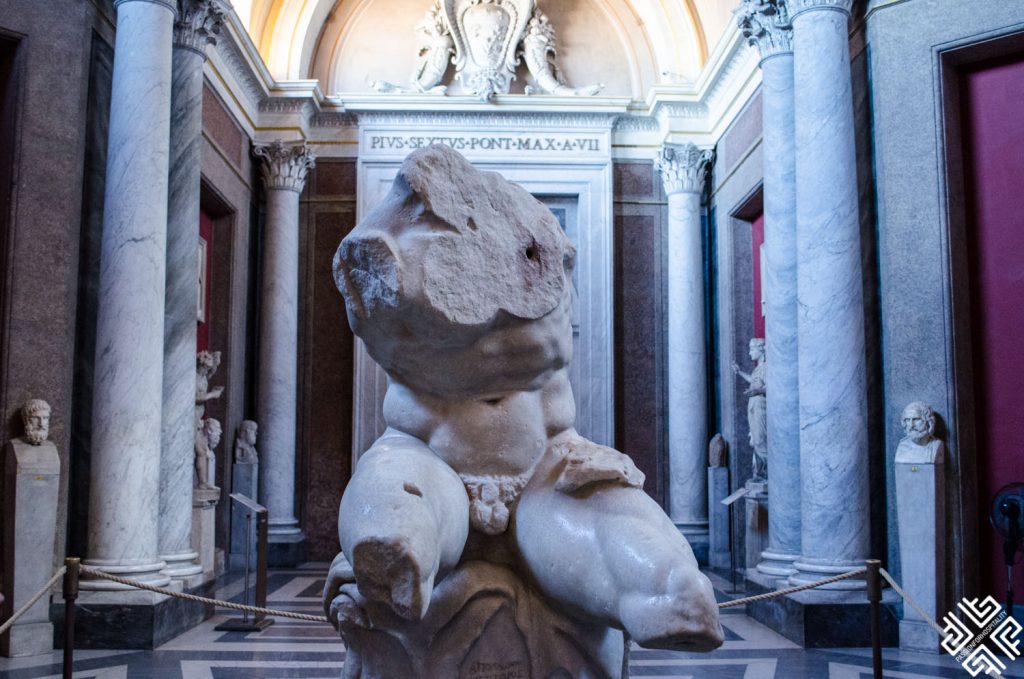
He used it as an inspiration for several of the figures which he painted in the Sistine Chapel. In the Last Judgement resemblance of the Belvedere Torso can be seen in the painting of Saint Bartholomew who is holding a knife of his martyrdom.
Raphael’s Rooms
The Raphael Rooms are the public part of the papal apartments featuring the famous frescoes by Raphael with the School of Athens and other masterpieces. Raphael and Michelangelo were guests of the Vatican at the same time, Raphael was known for his very active lifestyle and loved women and having fun.
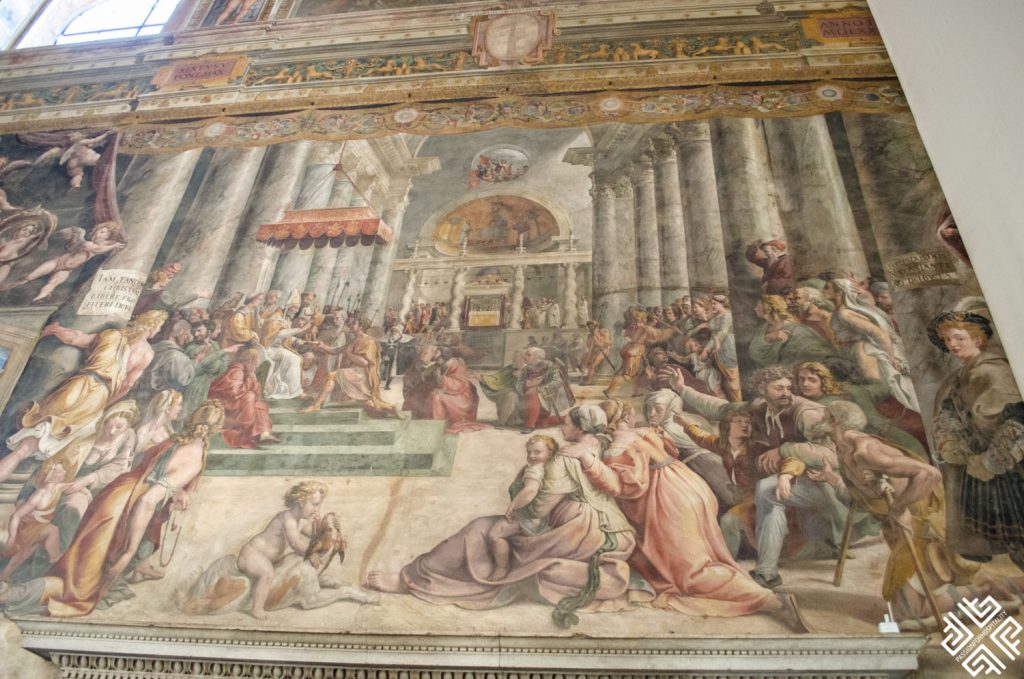
He died at the young age of 37 years old, at the peak of his artistic life. Michelangelo on the other hand preferred to be alone, he did not allow anyone into his life nor close to his works which he kept locked-off and away from the prying eyes. He on the other hand lived to be 88 years old, longer than the rest of his fellow Renaissance artists.
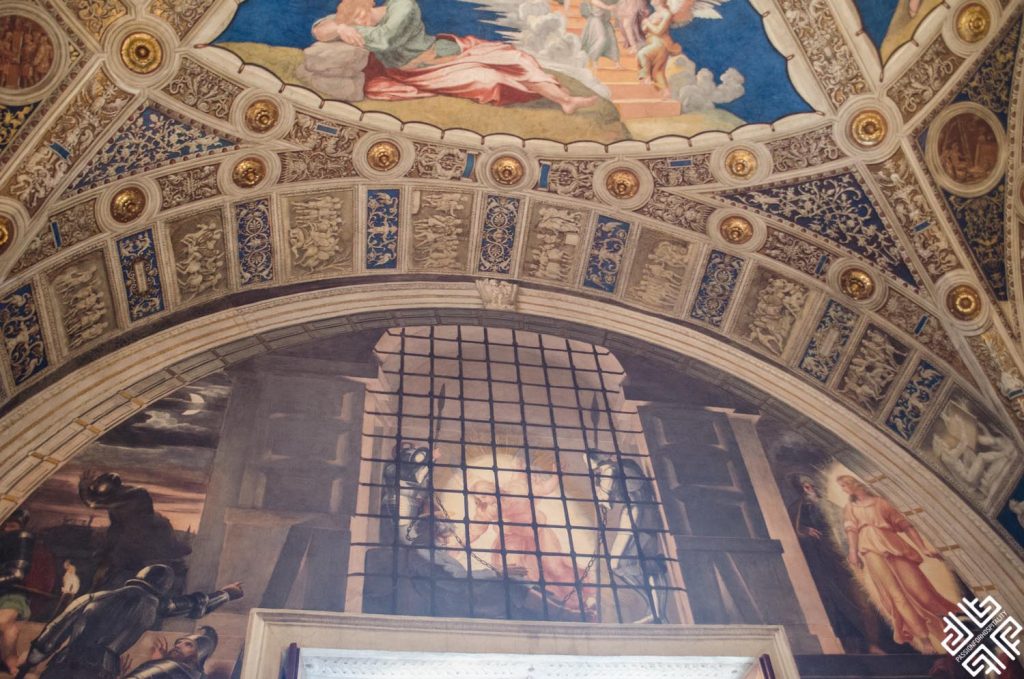
In the School of Athens you can see Aristotle and Plato portrayed in the middle of the painting, the face of Plato is said to resemble Leonardo da Vinci — whom he spent time with living under one roof at the Vatican. The characters in the painting are said to be those whom Raphael particularly liked. The thinker in the front of the painting is Heraclitus or perhaps Michelangelo whose characteristics are defined by the fact that Heraclitus was self-taught, a pioneer of wisdom and led a very lonely life — something that the life of Michelangelo can be compared to. In the painting Raphael included himself too, interpreted as Apelles of Kos, a renowned painter in ancient Greece (he placed himself in the far end of the righthand side corner).
With a group of only 6 people we could easily hear what Davide had to say and this was a great part of booking the Vatical small group tour.
Saint Peter’s Basilica
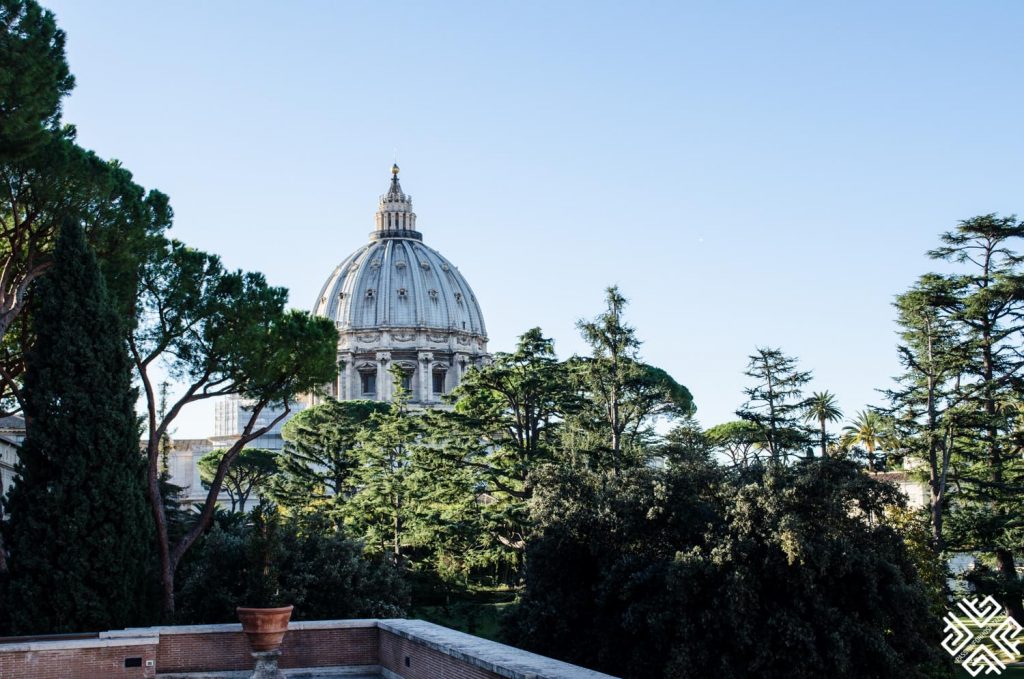
After we explored the Raphael’s Rooms, we passed once more through the Sistine Chapel and head towards the Saint Peter’s Basilica which includes Michelangelo’s Pietà and Bernini’s Baldacchino Altar.
The Pieta is one of Michelangelo’s earlier works which was commissioned by a French Cardinal to decorate his tomb in 1498. Michelangelo headed to Cararra to pick out the best quality marble.
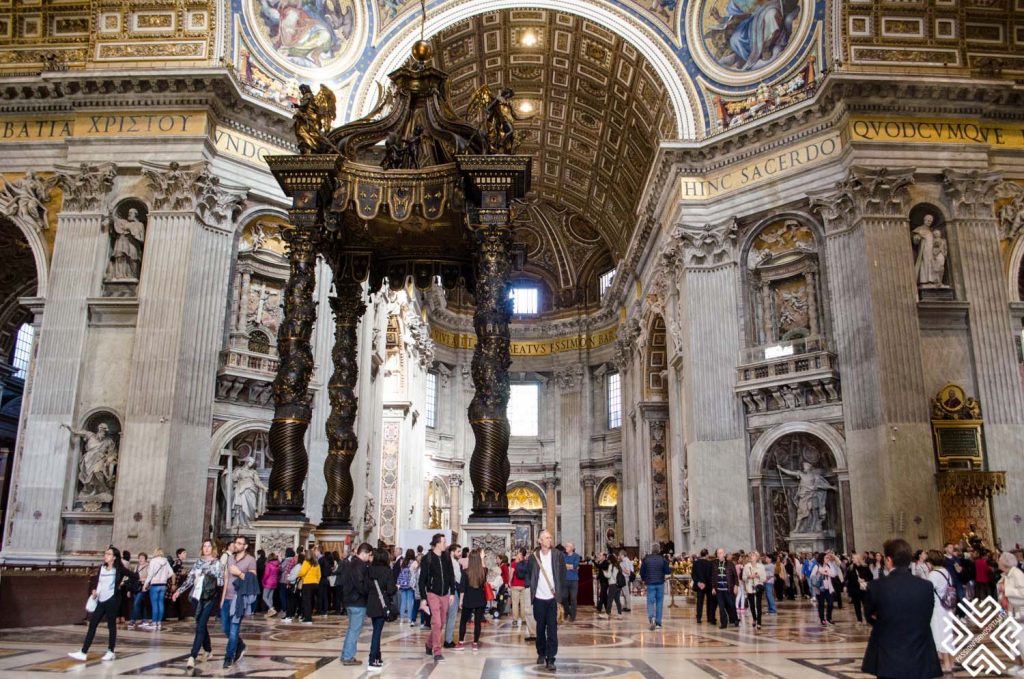
In his work he portrayed Virgin Mary as a young lady and when asked about why he did it his response was that virgin women did not age and there were no sins etched onto their faces. This is the only sculpture which Michelangelo signed and this is because one day he heard some men give credit to someone else for his work — feeling jealous he made sure that the world knew who is the artist. The statue is covered with behind glass as year’s ago an attacker with an axe tried to destroy it.
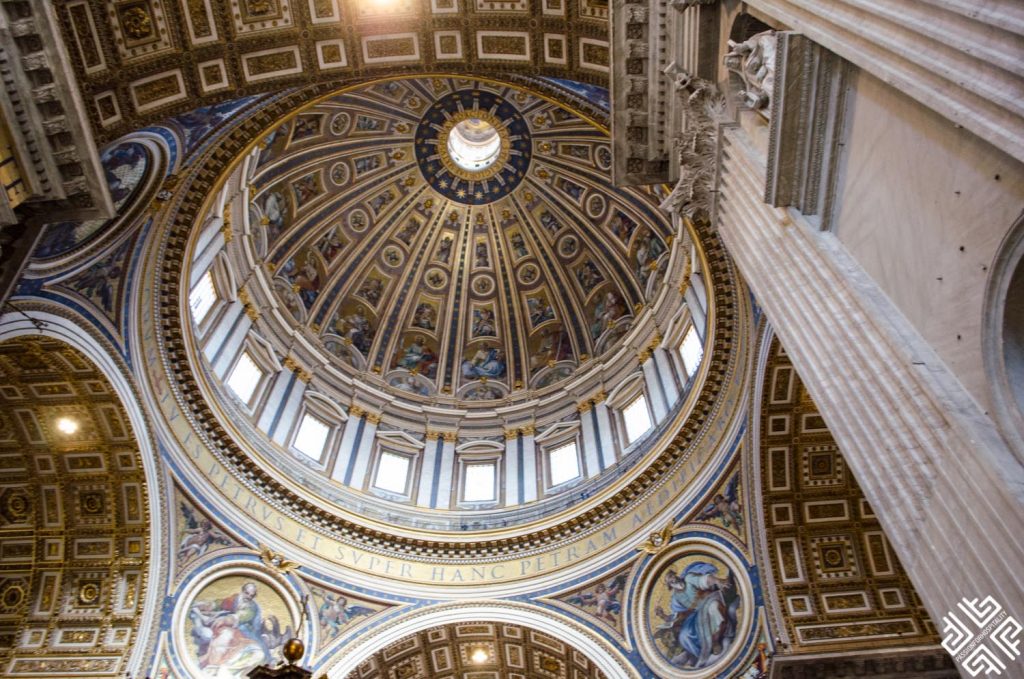
After you finish your tour you can also go down to the lower lever and visit the tombs of the popes, no photos are allowed in there. There is plenty of space and light inside, so don’t worry if you are claustrophobic.
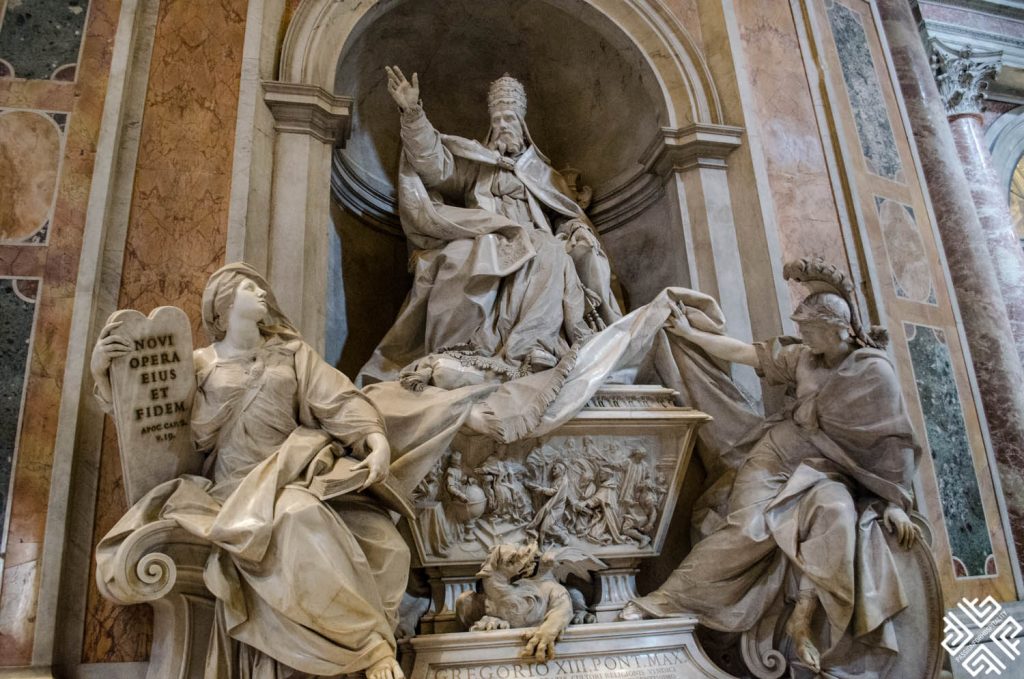
Photographs inside the Saint Peter’s Basilica are allowed with flash and that’s because the paintings on the ceiling are made of small mosaics, and not painted.

You can visit the Dome, which we did not do as the queue was very long. To get to the first level you must climb 320 steps, but there is an elevator option as well. The second part is another 231 steps but this can only be done on foot.
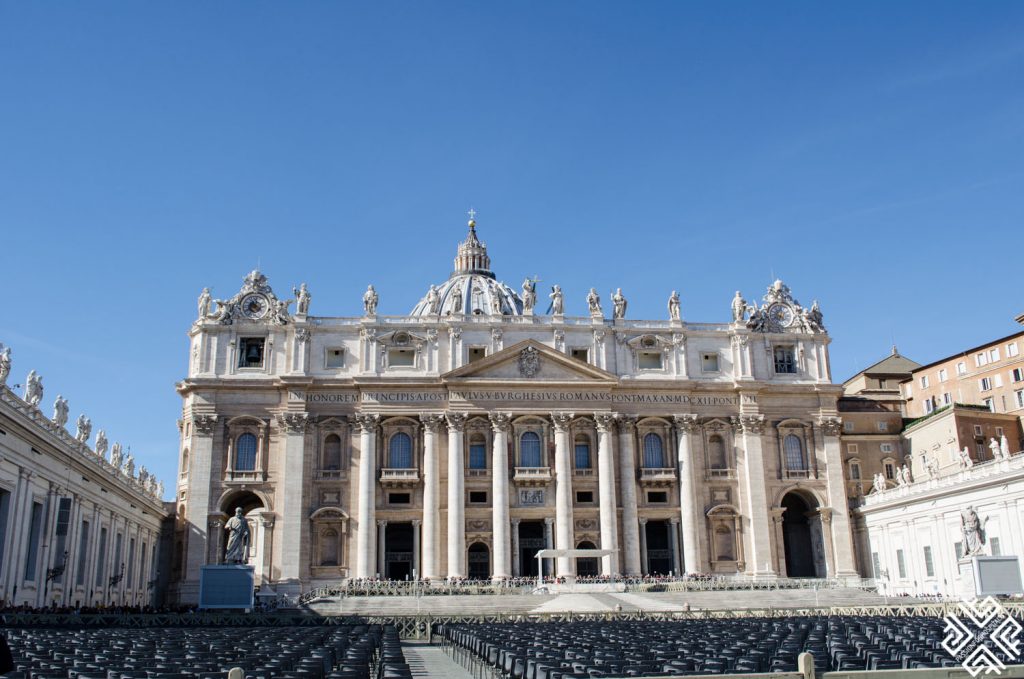
Skip the lines with LivItaly Tour
After having finished our tour of the Vatican Museum, we were passing through and we could see the massive lines. There is no empty space to take photos so that you can get the feeling of an almost empty museum, like you can see in my photos. Not only that, you will get the feeling of a sardines in a jar.
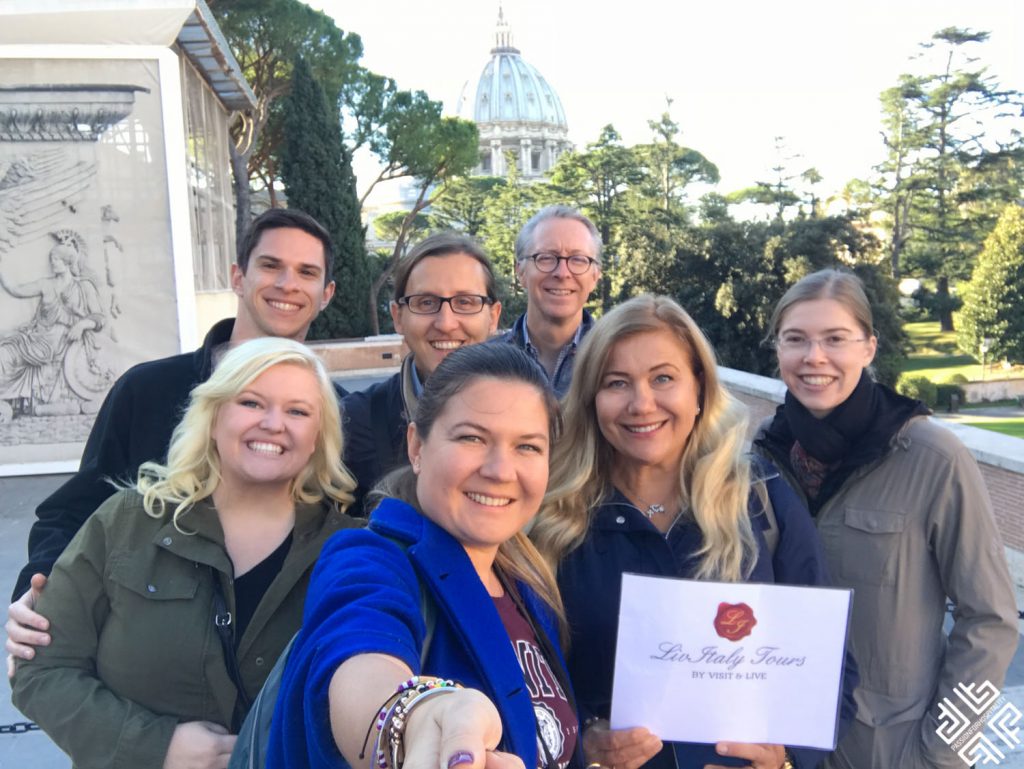
The Vatican Early Entrance Small Group Tour meant that we got in at 8am which is one hour before the Vatican opens to the public. We had the opportunity to enjoy the galleries at our own leisure and to listen to the history explained by Davide.
We had about 15 minutes inside the Sistine Chapel to sit and admire Michelangelo’s fresco paintings, it was quiet and not so busy.
Details of the Vatican Early Entrance Small Group Tour
Duration: 3.5 – 4 hours (expect to walk about 3.5 kilometres inside the Museums and the Saint Peter’s Basilica)
Offered on: Mon, Tue, Thu, Fri, Sat at 7:30am
Meeting point: Vatican Cafe across from the entrance of the Vatican Museum
Exclusive private Tours and Experiences. Also offered in Spanish, French, Portuguese, Swedish and Russian
Price: 99€ Adults, 89€ students, 79€ teenagers, 69€ children (includes tickets and reservations fees, no waiting in lines)
Website: https://www.livitaly.com
Pin for later…
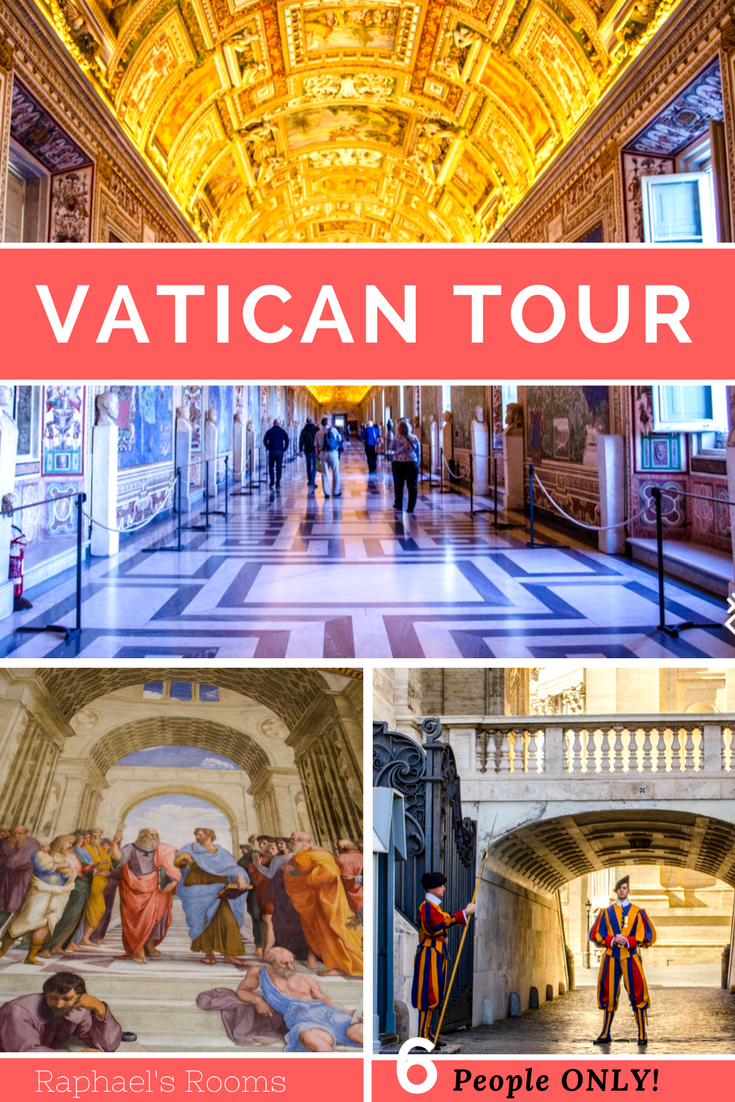
*Passion for Hospitality was a guest of LivItaly, all opinions expressed are my own.


